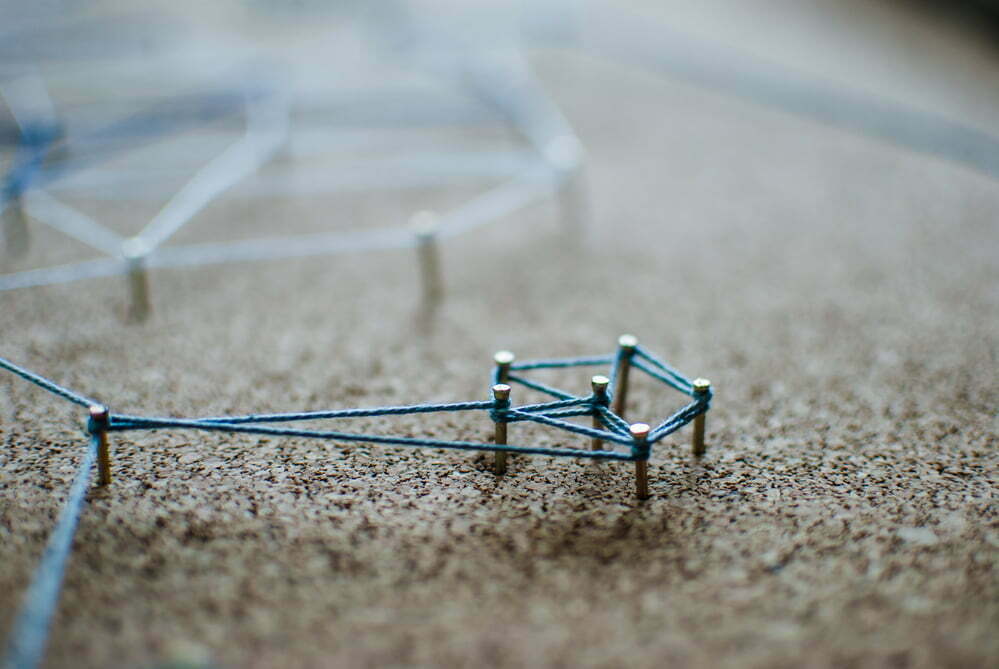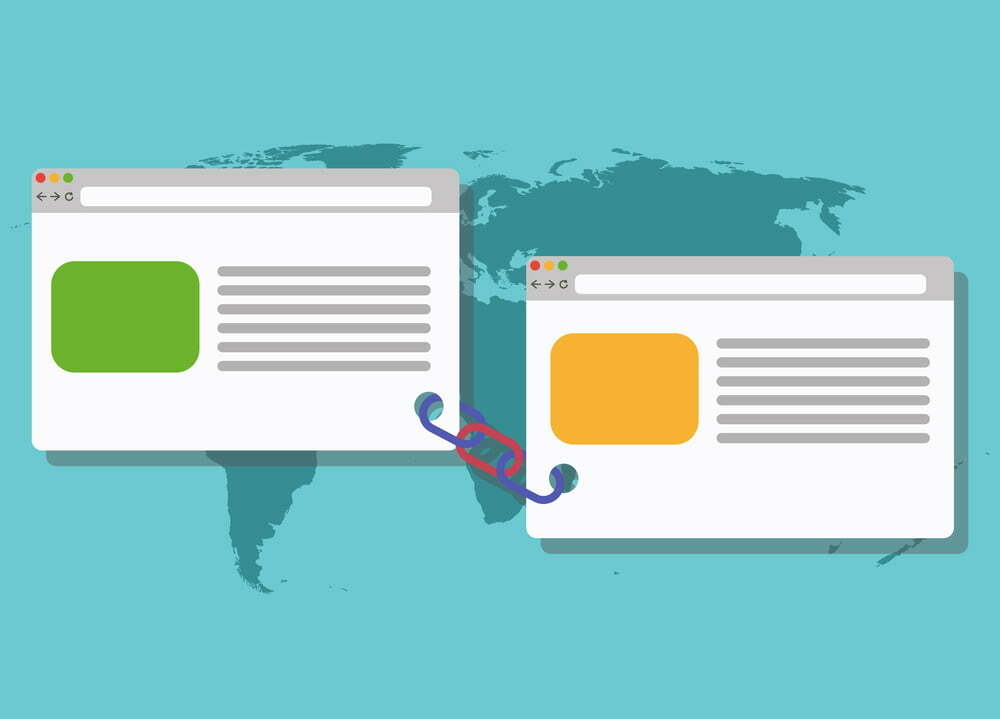If you spend a lot of time learning about SEO tips and tricks, you may have come across link sculpting. Even though the process of link sculpting may be considered “dead,” it’s still an SEO technique used by many in the community.
Below, I’ll be covering what link sculpting is and how it can affect your SEO strategy for the better:
How Link Sculpting Works

The art of link sculpting includes manipulating your website’s page rank by controlling the flow of link juice. No, I didn’t make that up. Link juice describes how much power a backlink passes onto another site.
The process of link sculpting can be achieved by adding the “nofollow” attribute tags to all the links you don’t want “juice” to flow to. The process includes excluding links from pages that you do want to rank for.
Adding nofollow tags to internal links can strategically distribute your link juice. You can also add nofollow tags to external links to keep link juice from leaving your site.
Some more link sculpting techniques include link rel=canonical and link rel=prev/next.
Sculpting With Nofollow Tags
First, identify the links on your website that you want to “nofollow.” That might include links that lead to low-quality or spam-infested websites and links you don’t want to pass link juice to.
Add the rel=nofollow attribute to each link that you wish to nofollow. The attribute should look something like this: <a href=”https//example.com” rel=”nofollow”. Anchor text</a>
When you use the nofollow attribute, you’re telling search engines not to follow, acknowledge, or pass link equity through specific links. It’s a useful process for link sculpting, as it allows you more control over the flow of link equity on your website and helps prioritize particular pages or links.
It’s important to note that using the rel=nofollow attribute may have positive and negative consequences involving your SEO strategy. Yes, it can help protect against linking to untrustworthy or spammy websites, which can negatively influence your site’s reputation and reduce the overall link equity of your website. However, visitors may not be able to share your site because of the nofollow attribute, meaning that you could miss out on more website visitors.
Back in March 2020, Google announced that it would no longer treat the rel=nofollow attribute as a hint to avoid crawling links. Instead, the attribute would signal that the link should not be used for page rank calculations or link equity. This means using rel=nofollow for link sculpting purposes may no longer have the effect it previously did.
Instead of ignoring nofollow links, Google will still crawl and index them but not pass the link equity as it used to. This doesn’t mean that link sculpting is no longer a useful method, as other techniques, such as rel=canonical, can consolidate link equity from similar or duplicate pages. The rel=prev/next attributes are also helpful for paginated web pages and link sculpting efforts.
Sculpting With rel=canonical

You can identify duplicate or similar pages on your website if you want to consolidate the link equity. This might include pages with similar content and different URLs or web pages you can access from various URLs.
Add the rel=canonical attribute to the link element in the head of each duplicated or similar web page. You must ensure the preferred page has a self-referencing rel=canonical attribute in the head.
By using this particular attribute, search engines will know to treat duplicate/similar pages as copies of the preferred page. As a result, the link equity should get passed on to the preferred page. Not only can it consolidate link equity, but it can improve your overall SEO performance for the preferred page.
Remember to only use rel=canonical for pages that are similar or duplicated. If you were to use it on unrelated web pages, you may experience negative SEO-related consequences.
Sculpting With rel=prev/next

Start by identifying a series of paginated pages on your website that you would like to sculpt for link equity. What does that entail? Anything from a series of blog posts, product category pages, or other content that’s divided into more than one web page.
Add the rel=prev attribute to the link element in the head of the first page in the series. Then, you must add the rel=next attribute to the link element in the head of the second page. Repeat the process on the second and third pages. I think you get the idea. Continue this pattern for each page in the series.
Using these attributes will indicate to search engines that the paginated pages are part of a series or sequence and should be treated as such. It can help pass more link equity to the first page in the series, which is a must for SEO purposes.
Common Mistakes To Avoid When Link Sculpting
When it comes to link building or link sculpting, there are some key aspects to be mindful about:
- Be Selective When Creating Links: Don’t overcomplicate it. You don’t need to link to every possible web page available. Pay close attention to related topics that make sense for your content. If your web page is full of links, it’ll look like spam and deter possible users.
- Regularly Monitor Links: Always check to ensure no broken links are in your content. Broken links can confuse search engine crawlers and negatively impact the user experience. Take the time to find and correct any broken links.
- Review Your Profile: Review your link-building profile as much as possible. Look for links that can potentially hurt your website and delete those that are irrelevant to the content.
Best Practices for Link Sculpting
Here are some guidelines when determining the most effective way to sculpt each link:
- Identify the Purpose of Each Link: The first step involves understanding the purpose of each link on your website. This will help you figure out the most effective way to sculpt each link. For example, a link to a spam-infused website might be a candidate for the rel=nofollow attribute, whereas the rel-canonical attribute would make sense for a duplicate page.
- Consider the Value of Each Link: You can determine the value of a link by the quality of the website and its relevance to your content. Think of it this way: Links from higher-quality sites are more valuable than those from low-quality or irrelevant ones.
- Analyze the Link Equity of Each Page: Use tools like Semrush or Ahrefs to analyze the link equity of each page on your website. Doing so will help you understand which pages have the most equity and which don’t. The information is useful for link sculpting and redistributing link equity to pages that don’t have enough views.
- Track/Manage Your Link Sculpting Efforts: Tools like Keyword.com can track the impact of your link sculpting efforts and help you see which pages are getting more or less equity. The information affords you the ability to make changes that may have a positive effect on your SEO performance.
Conclusion
When link sculpting, it’s paramount to identify the purpose of the link and which technique is best suited. If you don’t want to pass link equity to another site, consider using nofollow tags. Use rel-canonical attributes if you want to consolidate equity from similar or duplicate pages and rel=prev/next if you have a series of pages you want to sculpt the equity for. The right methods can improve your SEO efforts and success.
Link sculpting is an essential component of search engine optimization since it aids in efficiently allocating link equity for optimum gain. A unique tool called Link Whisper aids website owners in link analysis and distribution decision-making. You may read this review of Link Whisper to find out more about this particular tool and how it might help you with link sculpting.



Leave a Reply
You must be logged in to post a comment.